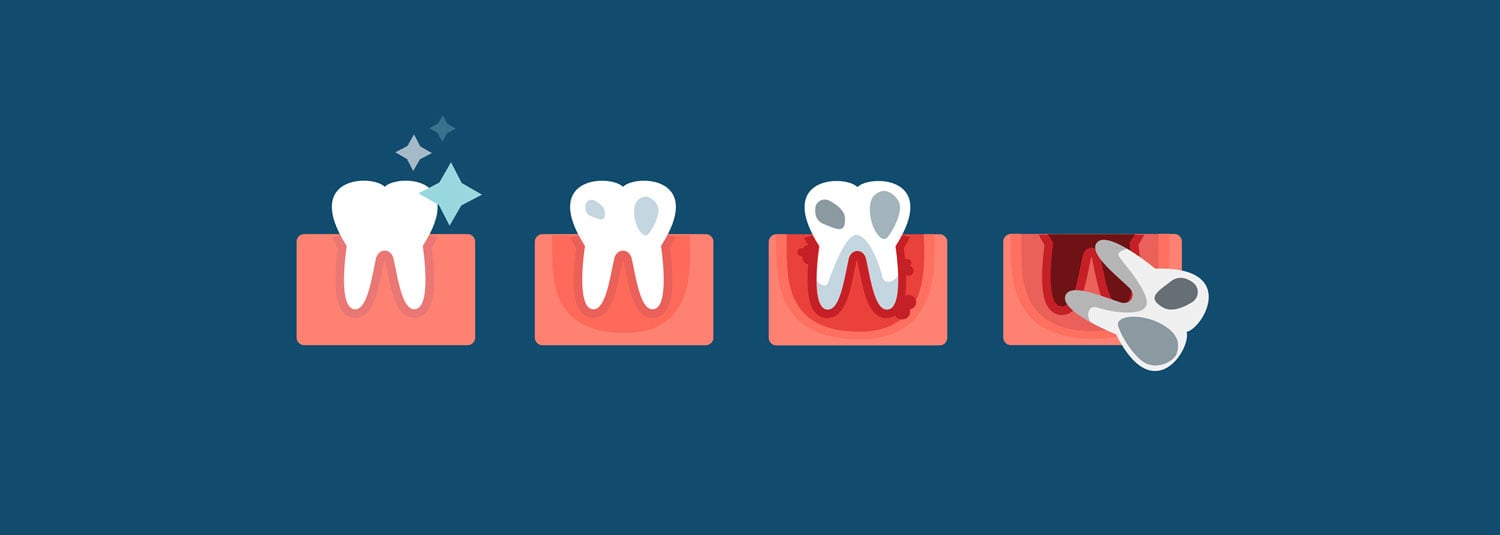Gum Recession: Causes, Treatments, and Prevention

While you’ve likely heard the term ‘gum recession’, many people are unaware of what exactly gum recession entails and why it’s a problem. Furthermore, few people are aware of just how common gum recession is; in fact, many people have receding gums without realizing it because the recession process happens so gradually. However, when not appropriately treated, gum recession– which is the process of the gum tissue surrounding the teeth wearing away– can ultimately lead to tooth loss.
What causes gum recession?
There are several potential causes of gum recession, including:
- Gum disease. Gum disease– otherwise known as periodontal disease– is the leading cause of gum recession. There are certain types of gum disease that wreak havoc on the gum tissue and surrounding bones that are responsible for holding teeth in place. When these bones and tissues are destroyed, tooth loss is the result.
- Poor oral hygiene. Neglecting oral hygiene is another common cause of gum recession. When patients don’t brush and floss regularly, plaque on the teeth turns into calculus. Calculus– which is a hard substance that builds up on and between the teeth– can only be successfully removed with professional dental cleanings. Thus, if you combine insufficient oral hygiene with lack of professional dental care, the result is the perfect recipe for gum recession.
- Aggressive tooth brushing. If brushing your teeth gets them clean, brushing your teeth as hard as you can will result in a sparkling smile, right? Wrong. Aggressive tooth brushing can be just as damaging to your oral health as no tooth brushing. That’s because aggressive brushing can wear away tooth enamel and cause the gums to recede.
- Genetics. As unfair as it may seem, sometimes our genetics play a role in our oral health. In fact, studies show that some people are more likely to get gum disease– thereby increasing their chances of gum recession too– regardless of how well they care for their teeth.
- Hormones. For women, certain hormonal changes can result in an increased likelihood of gum recession. These hormonal changes typically occur as a result of puberty, pregnancy, and menopause.
- Bruxism. Bruxism– or the clenching and grinding of teeth– can occur during the day or while sleeping at night. It is a common cause of gum recession; grinding and clenching puts a lot of pressure on the teeth, ultimately leading to recession.
- Tobacco. People who regularly use tobacco products are also more likely to suffer from gum recession. This is because tobacco products can cause a build up of plaque on the teeth which can’t be removed at home. The excessive plaque build up paves the way for gum recession to begin.
- Misaligned teeth. Sometimes, crooked or misaligned teeth can lead to receding gums. When teeth are not aligned properly, too much pressure on the gums and supporting bones can occur. This pressure can lead to gum recession.
How is gum recession treated?
The treatment method used for gum recession depends on the severity of the recession. Sometimes, gum recession can be treated by your dentist through a deep cleaning process. During this cleaning process, the excessive build up of plaque and tartar is removed. Then, the root area that has been exposed by the recession process is smoothed so that bacteria can no longer attach itself easily. A final step in the deep cleaning process often involves an antibiotic prescription to rid the mouth of any leftover harmful bacteria.
Unfortunately, deep cleaning isn’t always a treatment option for gum recession. When the recession damage is too severe– in the form of bone loss and deep pockets in the gums– surgery is sometimes necessary. The most common surgical procedures to treat gum recession include: pocket reduction, regeneration, and soft tissue grafts.
Prevention
Of course, prevention is the best way to avoid gum recession altogether. To prevent the recession process, practice good oral health habits, including brushing twice daily and flossing every day. Regular dental check-ups and professional cleanings are also imperative to prevention. Finally, if you smoke or use other tobacco products, it’s time to call it quits.
For more information about gum recession causes and treatment options, please contact us today!
Return to Blog